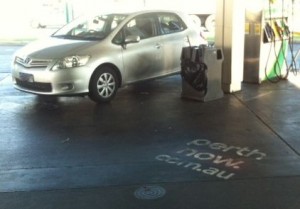The announcement from Fairfax yesterday outlining the most comprehensive restructure in the history of newspapers in Australia was not a surprise. Not to me and many others. But plenty were surprised.
Fairfax CEO Greg Hywood had told us major changes were coming. News Limited CEO Kim Williams has told us that News, too, was preparing a major announcement on its plans for the future. While we should not be surprised by what Kim Williams announces shortly, some will be.
I have written here for almost eight years about media disruption – 985 posts in all and I’ve barely covered what has been happening around the world.
If we look at music and books we have guidance on how a major shift in how the audience engages with content can play out for the distribution channel. How many music stores are left? What are print book sales versus digital downloads? You know the answers.
But newspapers were different. We love them. We feel like we own them. John Howard, as Prime Minister, commented several times about the warm feeling of hearing the newspaper land on the front lawn. We have had a long love affair with getting our news by engaging with ink on the page. But newspaper are businesses. They live or die based on profitability.
The end of newspapers began when classified advertising moved online and while plenty in newspaper publishing businesses said it was business as usual and that print would be here for the long term, they know otherwise when advertising revenue started to decline and then fell off a cliff.
I don’t want newspapers to shrink and close. I like the medium. But times change, people change. Paper is being replaced at work and in the home. And we are experiencing just the beginning of this change.
Newspaper publishers told newsagents that the paper product will remain because they needed newsagents to be their partners to the end. Newsagents provide the cheapest newspaper delivery option available. Newsagents are part of their decay play, they give the home delivery of newspapers a longer life. I don’t begrudge newspaper publishers their view, it’s practical for them and their shareholders. Newsagents should have known better, they were warned.
What I wrote wrote in February about News Limited being in crisis in terms of newspaper home delivery was true. The crisis was in part brought on by newsagents walking away from their home delivery businesses, in numbers which alarmed News. The announcement coming soon from News was expected to speak to the extent of the crisis (or whatever you want to call it). The Fairfax announcement could mean that News pulls back somewhat from or delays the full implementation of its plans to see how the Fairfax move plays out.
I have no doubt we will see the closure of some daily newspapers in Australia. This has been my view of some time and I’ve stated it here before and in other public forums. It’s one of several reasons why I have been calling for newsagents to reinvent their businesses, to seek out new traffic drivers for retail, to source new uses for distribution infrastructure.
I also have no doubt that we will see sales of some newspapers grow … when engaged publishers realise what people will pay for in this marketplace.
Fairfax owes newsagents nothing. The challenge is that many newsagents disagree. You can’t force a business to operate an unprofitable operation. Yet that is what many newsagents have done for many years. Maybe the Fairfax announcement yesterday will shake these newsagents to take charge of their own situation.
I am not changing my business plan in the wake of yesterday’s announcement. I will continue to focus on broadening sources of traffic for my newsagencies. I’ll continue to adjust the product mix and placement to increase the basket size. I will drive margin when I see an opportunity to make a product more valuable to the business. I will do all this without disrespecting traffic I get today from core newsagency lines like magazines, greeting cards, stationery and, yes, newspapers.
Here is what has changed in case newsagents missed it – just a few years ago we could rely on newspapers to deliver 50% or more of our foot traffic every day. 80% or more newspaper sales were for a paper and nothing else – most likely from people who would come back in another visit for other purchases. As they purchased fewer newspapers they thought less of the newsagency for the other items. If we did not maintain our relevance outside newspapers we lost some of these previously welded-on shoppers.
Newsagents who have not replaced newspaper traffic and have been surprised by the Fairfax announcement need to move quickly to rebuild relevance and to bring in new traffic.
I’ll gladly help any newsagent feeling challenged by what is happening.
 This is interesting. @JonasAUS, a Twitter account for fans of a US group called the Jonas Brothers, tweeted to 27,769 fans that they wanted to see the boys on the cover of Dolly and Girlfriend. The tweet went to Dolly and Girlfriend Twitter followers, 18,886 and 25,004 followers respectively. It was also retweeted by 39 followers, getting it in front of many thousands more.
This is interesting. @JonasAUS, a Twitter account for fans of a US group called the Jonas Brothers, tweeted to 27,769 fans that they wanted to see the boys on the cover of Dolly and Girlfriend. The tweet went to Dolly and Girlfriend Twitter followers, 18,886 and 25,004 followers respectively. It was also retweeted by 39 followers, getting it in front of many thousands more.
